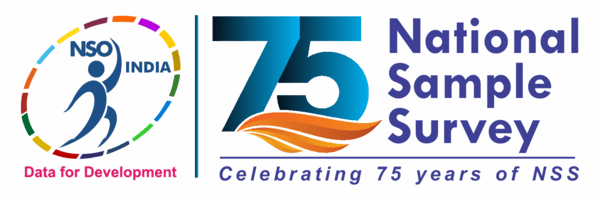| Value | Category | Cases | |
|---|---|---|---|
| 01 | Cereals & cereal products (includes muri, chira, maida, suji, noodles, bread (bakery), barley, cereal substitutes, etc.) | 99152 |
3.7%
|
| 02 | Pulses & pulse products (includes soyabean, gram products, besan, sattu, etc.) | 97328 |
3.6%
|
| 03 | Milk | 80060 |
3%
|
| 04 | Milk products (includes milk condensed/powder, baby food, ghee, butter, ice-cream, etc.) | 39968 |
1.5%
|
| 05 | Edible oil and vanaspati | 98395 |
3.7%
|
| 06 | Vegetables (including garlic, ginger) | 98643 |
3.7%
|
| 07 | Fruits & nuts (includes mango, banana, coconut, dates, kishmish, monacca, other dry fruits, etc.) | 83234 |
3.1%
|
| 08 | Egg, fish & meat | 67990 |
2.5%
|
| 09 | Sugar (includes gur, candy (misri), honey, etc.) | 97347 |
3.6%
|
| 10 | Salt & spices (includes dry chillies, curry powder, oilseeds, etc.) | 98697 |
3.7%
|
| 11 | Other food items (includes beverages such as tea, coffee, fruit juice and processed food such as biscuits, cake, pickles, sauce, cooked meals, etc.) | 97688 |
3.6%
|
| 12 | Pan, tobacco & intoxicants | 61546 |
2.3%
|
| 13 | Fuel & light | 99632 |
3.7%
|
| 14 | Entertainment (includes cinema, picnic, sports, club fees, video cassettes, cable charges, etc.) | 51731 |
1.9%
|
| 15 | Personal care and effects (includes spectacles, torch, umbrella, lighter, etc.) | 24779 |
0.9%
|
| 16 | Toilet articles (includes toothpaste, hair oil, shaving blades, etc.) | 99995 |
3.7%
|
| 17 | Sundry articles (includes electric bulb, tubelight, glassware, bucket, washing soap, agarbati, insecticide, etc.) | 99033 |
3.7%
|
| 18 | Consumer services excluding conveyance (includes domestic servant, tailoring, grinding charges, telephone, legal expenses, pet animals, etc.) | 93502 |
3.5%
|
| 19 | Conveyance (includes porter charges, diesel, petrol, school bus/van, etc.) | 75849 |
2.8%
|
| 20 | Rent/ house rent | 16845 |
0.6%
|
| 21 | Consumer taxes and cesses (includes water charges, etc.) | 47628 |
1.8%
|
| 22 | Medical expenses (non-institutional) | 67026 |
2.5%
|
| 23 | Sub-total (items 1 to 22) | 100956 |
3.8%
|
| 24 | Medical (institutional) | 17750 |
0.7%
|
| 25 | Tuition fees & other fees (includes private tutor, school/college fees, etc.) | 56659 |
2.1%
|
| 26 | School books & other educational articles (includes newspaper, library charges, stationery, internet charges, etc.) | 69990 |
2.6%
|
| 27 | Clothing and bedding | 100099 |
3.7%
|
| 28 | Footwear | 99011 |
3.7%
|
| 29 | Furniture and fixtures (includes bedstead, almirah, suitcase, carpet, paintings, etc.) | 17356 |
0.6%
|
| 30 | Crockery & utensils (includes stainless steel utensils, casseroles, thermos, etc.) | 53406 |
2%
|
| 31 | Cooking and household appliances (includes electric fan, air conditioners, sewing machine, washing machine, pressure cooker, refrigerator, heater, toaster, etc.) | 22978 |
0.9%
|
| 32 | Goods for recreation (includes TV, radio, tape recorder, musical instruments, etc.) | 10590 |
0.4%
|
| 33 | Jewellery & ornaments | 17774 |
0.7%
|
| 34 | Personal transport equipment (includes bicycle, scooter, car, tyres & tubes, etc.) | 46088 |
1.7%
|
| 35 | Therapeutic appliances (includes glass eye, hearing aids, orthopaedic equipment, etc.) | 2868 |
0.1%
|
| 36 | Other personal goods (includes clock, watch, PC, telephone set, mobile handset, etc.) | 23262 |
0.9%
|
| 37 | Repair and maintenance (of residential buildings, bathroom equipment, etc.) | 43698 |
1.6%
|
| 38 | Sub-total (items 24 to 37) | 100864 |
3.8%
|
| 39 | Average monthly expenditure for items 24 to 37 [item 38 x (30÷365)] | 100874 |
3.8%
|
| 40 | Monthly household consumer expenditure (item 23 + item 39) | 100957 |
3.8%
|

